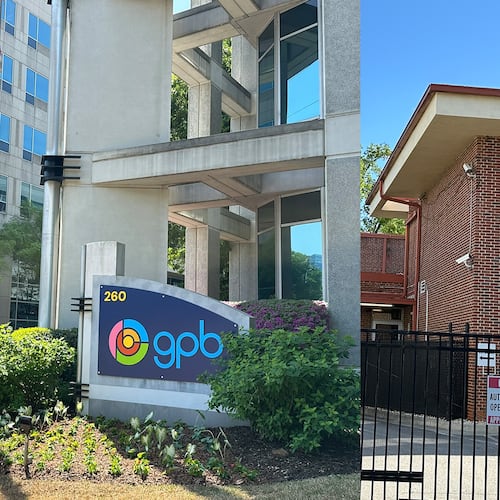SAVANNAH — Power chords from a rock band covering Led Zeppelin tunes stream out of City Market at Ellis Square while children dance in the cool spray of a fountain.
Cyclists pedal down Broughton Street past a row of brick storefronts where stores like H&M will mingle with other major chains and Savannah-borne boutiques. It’s an April Sunday, and Savannah’s historic district is brimming with life.
Tourism in Georgia’s oldest city has surged in recent years — with 2014 hotel room tax revenue up 17 percent over the prior year, according to Armstrong State University — and developers see gold: They plan about $1 billion in new hotel and retail projects, city boosters say.
Savannah Area Chamber of Commerce chief Bill Hubbard admits it’s on a smaller scale, but he likens the city’s burst to Atlanta’s pre-Olympics boom.
“It’s exactly like ‘89, ‘90 and ‘91 when things were going so well in Atlanta and all the stars aligned,” said Hubbard, a former executive with the Metro Atlanta Chamber.
Savannah’s growth spurt is balanced, he added, with healthy doses of manufacturing, logistics, tourism and health care.
Expansions at Gulfstream jets, JCB tractors and in the warehousing of goods shipped through fast-growing ports — has brought an influx of new jobs and corporate investment.
A Savannah Chamber estimate pegs the city’s total commercial development pipeline at about $3 billion, including new retail, residential, hospitality and manufacturing development. That doesn’t include the plan to dredge the Savannah River to support bigger cargo ships.
Now Savannah is closely watching Georgia battle South Carolina to land a half-billion dollar Volvo plant. Georgia is pitching a 1,900-acre site 30 minutes northwest of the city, in Bryan County, for the factory and 4,000 estimate jobs over the next decade.
Positive numbers
An Armstrong State economic snapshot showed employment grew 4.6 percent in the three-county Savannah area in 2014, with manufacturing jobs ended 2014 up 6.5 percent. The number of passengers through Savannah’s airport climbed 18 percent last year, the university report said.
The activity is carrying over into the first quarter, said Michael Toma, an economist with Armstrong State.
The Georgia coast was hardly immune from the global financial meltdown. A number of key development projects were stalled or scuttled by the Great Recession. A handful of banks with operations on the coast failed.
The tony Sea Island resort tumbled into bankruptcy after a development binge. It was bought out by big shot hedge funds that have ridden the wave of an improving economy and restarted some residential development. A big-ticket development plan on Jekyll Island was scaled back, but developers recently opened a Westin hotel near a new conference center.
Murmurs abound that developers could again move forward with other stalled projects, such as Savannah River Landing, a 54-acre stretch of land once envisioned as an eastern expansion of the city’s downtown.
Just to the north of Savannah, Crescent Communities, announced last week the opening of a major expansion of Palmetto Bluff, an exclusive 20,000-acre residential enclave in Bluffton, S.C. The expansion, known as Moreland Village, includes lots from $275,000 to $1 million. A separate expansion of the community’s boutique hotel – the Inn at Palmetto Bluff – is valued at more than $100 million.
Ben Carter, an Atlanta developer perhaps best known for the Mall of Georgia, recently opened the first phase of a Tanger outlet mall in Pooler near Savannah’s airport. Plans for hotels and restaurants on outparcels and a second retail phase could push the total development cost to more than total more than $300 million.
The center boasts brands like Polo and Coach, and Carter said sales in the first two weeks are well above expectations.
A second Carter project — a remake of 37 buildings on historic Broughton Street — will ultimately top $100 million, including new street front retail and restaurant space, more than 40 apartments as well as loft-style and Class A or top tier office space.
“Savannah is drawing a more discerning customer,” Carter said.
Regional tourism
Hospitality, health care and Savannah’s strong manufacturing and military sectors helped the region absorb the blow of the Great Recession, Hubbard said.
Tourism was sustained thanks in part from visitors from other Southeastern cities making shorter trips and picking Savannah when they might have gone to Florida or other locales, Hubbard said.
Kessler Collection Design & Development, a boutique hotel firm based in Orlando, plans two new hotels as part of a $235 million mixed-use development that would become a new gateway to River Street, the city’s cobblestone riverfront stretch of restaurants, bars and shops.
The project would remake an early 20th Century power plant site into a 279-room hotel. A smaller 143-room luxury hotel, a 400-seat concert hall, retail space and restaurants would round out the project.
Much of the façade and industrial look of the former Plant Riverside power station, built in the 1910s and operated by Georgia Power, will be preserved and incorporated into the larger hotel.
“It will really transform that west end of River Street,” said Mark Kessler, president and COO of Kessler Collection.
Several hotels in the early stages of planning are forcing developers to up their games, Kessler said.
“It’s becoming a much more competitive market,” he said.
About the Author
Keep Reading
The Latest
Featured




